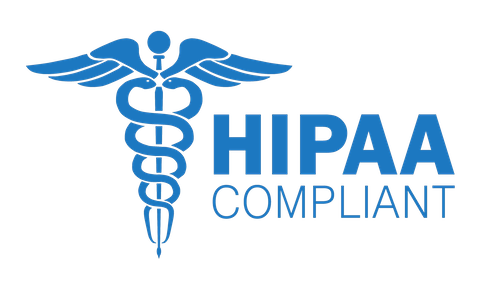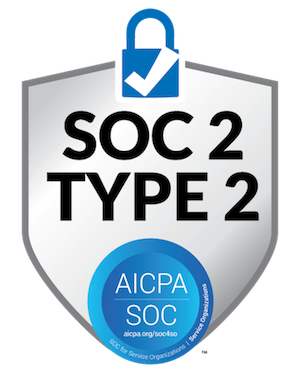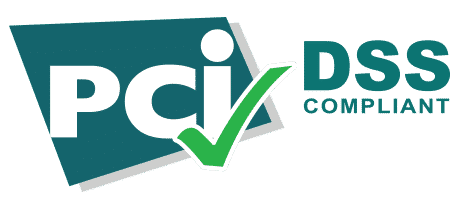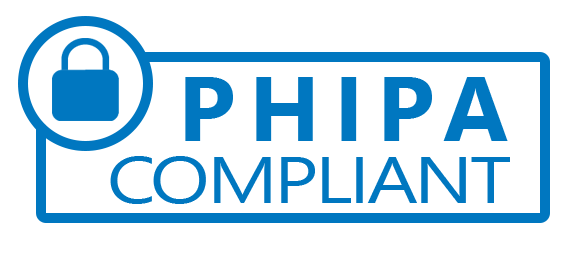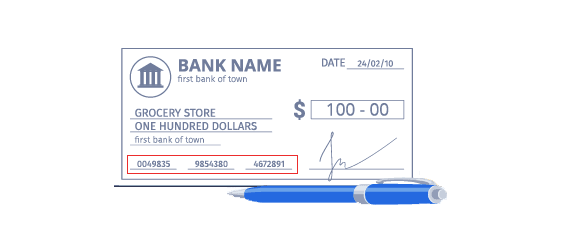
How to Write a Cheque in Canada?
There are a lot of things to consider while writing a cheque in Canada. You can start by mentioning the date in the top-right corner of the cheque. It indicates when you have written the cheque and the day when it can be cashed. This payment instrument must have the payee’s name on the “pay to the order of” line with correct spelling.

You must also write the amount in numeric form on the extreme left of the box. Write the same amount in words below the payee’s name in the respective field. The bottom right corner of the cheque has a dedicated signature line. Use a legible signature recorded with your bank. It shows that the cheque is valid and you agree to pay the payee.
You will also find a memo section in your cheques to provide a short description or note explaining the reason behind a particular cheque. It also makes it easier for your accountant to understand each payment. Canadian cheques also have another critical element known as the MICR line. It consists of your cheque number, account number, transit number, and your banking institution code. This blog will teach you how to write a new one.

Key Takeaways
- Cheques are still a popular payment medium in the world of online banking and debit or credit cards.
- There are multiple steps to write a check, including mentioning a date, payee, amount in numeric and alphabetical forms, signature, and memo.
- A cheque register could simplify your cheque payments.
- It is necessary to follow security measures while writing a cheque.
- Insurance companies, landlords, or employers might demand a void cheque to verify your banking details.
Steps to Write A Cheque In Canada
There are a lot of fields to be filled in while writing a cheque. You should be aware of how to write a cheque, Scotiabank (Bank of Nova Scotia) to fill in the correct details in the right places.
Cheque Date
Write the date on the top right-hand corner of the cheque. It represents the day when you have written the cheque and the day when it can be cashed. You can also use cheques after the due date has been crossed for up to 6 months. If you do not have the required funds in your account but need to give a cheque to somebody, you have the option to post-date the cheque accordingly. A post-dated cheque cannot be cashed earlier, as per the Canadian Payments Association’s cheque-clearing rules.
Some cheques have a faded watermark on the date field to inform you of the acceptable date format. Mostly, it will be YYYY-MM-DD. If the watermarks are not there, you can still use this format or contact your bank to ask them about the acceptable form.
Payee
You need to write the payee’s name on the “pay to the order of” line. This field is the most important one, and you need to take care that only the right name with the correct spelling is written in this field. The name could be of an individual, a company, a school, a charitable trust, or any organization that has a bank account.
Do not use any acronyms or abbreviations unless the person or organization officially uses them in their names. You can write the words “cash,” “bearer,” or “myself” on this line for withdrawing money for yourself. However, it is not recommended to mention “cash” and “bearer” as it can lead to fraud if the cheque is stolen.
Amount in Numeric Form
Many people do not know how to write a cheque in cents. If your cheque amount is 120 dollars and 50 cents, you will need to write it as “120.50”. The dollar sign is already printed on the cheque. You simply need to start writing your cheque amount using numbers in the dollar amount box. It is good to start writing these numbers from the extreme left of the box, which does not leave any space for more numbers to be added by anyone.
Make sure to use two decimals for writing the cents amount. In the above example, it is $120.50 – you should never write it as $120.5.
Amount in Words
The next step is to write out the dollar amount in words below the payee’s name in the respective field. This field is not legally required to be filled in, but it is highly recommended that you write your cheque amount in words as well. If the amount in numeric form does not match the amount written in words, the teller will cash the cheque with the amount written in words. If you know how to write a cheque, RBC (Royal Bank of Canada), you can easily fill in this field.
For an amount of $540.26, you will write it as “Five hundred and forty dollars and 26 cents,” or “Five hundred and forty dollars and 26/100”. Alternatively, you can also write the amount as “Five hundred and forty and 26/100 dollars”. The cents amount is either written as a fraction or written in numbers with the word “cents” followed by it.
Signature
The bottom right corner of the cheque has a signature line to be signed on. You should only use a legible signature that is recorded with your bank. This signature makes the cheque valid and tells the bank that you agree to pay the stated amount to the payee mentioned. Always sign the cheque after filling in all the details and double-check the same. If your cheque does not bear a signature, it will be rejected. Make sure to include your signature only at the right place and not anywhere else, as signatures are also used to correct errors and replace names and amounts on cheques.
Memo
The memo section allows you to include a short description or a note stating the reason for that particular cheque payment. For example – “January rent payment” or “Painting bill”. It lets you remember the reason for which you wrote the cheque. Moreover, it also becomes convenient for your accountant to know the reason behind every payment and to be able to treat the transaction accordingly. The memo line enables both parties to keep a record of their payment and receipt particulars and avoid confusion and misunderstandings.
The other elements of a cheque include the cheque writer’s name and address, which are already pre-printed on every cheque. You can also add your phone number and email address by contacting your bank. There is another important element on cheques known as the MICR line. It consists of your cheque number, account number, transit number, and your banking institution code.
Cheque numbers are different for every cheque, whereas all the other numbers remain the same on every cheque that you write, print, and mail. The transit number represents your home branch, and the institution code represents your bank, irrespective of the branch that you are using.
Using A Cheque Register
Typically, you get a cheque register attached to the front or back of your chequebook. This cheque register contains some blank columns for you to fill in each time you write a cheque. It helps you keep a record of all the cheques you wrote and reminds you about their particulars. If you didn’t get a cheque register along with your chequebook, there are probably stubs or payslips attached to each cheque that remain as it is, even after your cheques are torn out. You can simply fill in the cheque details in these payslips and store them for future reference.
In cases where you didn’t receive any cheque register or attached payslips, make sure to purchase a register or maintain your cheque details in a spreadsheet.
Either way, it is vital that you maintain the records whenever you write a cheque. You should enter all the required information like the cheque date, number, description, and payee name in the cheque register.
A cheque register can be useful to you in the following ways:
- It can help you keep track of your cheques, enabling you to notice any missing ones and remember when you need to reorder them. In this way, you can always be updated about how many cheques you have in hand, so that you can plan your payments accordingly and reorder cheques from your bank as early as possible. Banks can take a few days or even a few weeks to mail your cheques. Hence, a cheque register comes to your rescue and helps you never run out of cheques. Print and mail automation platforms like PostGrid can help you instantly print cheques if you need them urgently.
- Individuals and organizations can track their spending using a cheque register. It can help you get a quick view of how much you have spent in a particular time period. This step is very helpful for balancing your income and expenses on a monthly or annual basis.
- Avoid misunderstandings and get details about failed payments. Cheque registers enable you to know and keep records of whether your cheques are deposited and cleared. It often happens that you learned how to write a cheque to CIBC Bank (Canadian Imperial Bank of Commerce) and give the cheque to someone. In this scenario, you will immediately record the cheque amount deduction to calculate your account balance. However, if your cheque is not deposited, your funds will not be deducted from your account, and your balance will be reflected as a higher amount compared to what you anticipated. A cheque register comes in handy to spot the undeposited cheque and reconcile the situation. Any mistakes can be immediately spotted and corrected.
- For reconciliation, cheque registers are a great tool to check whether you and your bank have recorded the same transactions and are on the same page. If you notice any discrepancies, you should immediately contact your bank, as it can be a fraud case. Identity and fraud thefts can be instantly identified if you maintain a cheque register.
- Avoid making double payments by referring to your cheque register before writing a cheque. For example, you have already written a cheque to your housekeeping staff. Sometimes, you might forget about it and write another cheque, initiating a double payment to the same person. Cheque registers can help you avoid such mistakes and waste of cheques.
- Get an instant view of your bank account balance. If you only use cheques as a payment method, a cheque register is highly recommended to know the available balance in your account at any point in time.

Security Measures and Tips on How to Write Cheques In Canada
Once you know how to write a cheque to Scotiabank (Bank of Nova Scotia), you can secure it from any potential fraud using general tips and preventive measures. Some very common yet useful tips to be considered while writing a cheque are:
- Write in clear and neat handwriting. Make sure that everything that you have written is understandable and that there is no scope for misinterpretation.
- Use the printing method rather than writing a cheque with a pen. The print form is easier to read and offers excellent clarity.
- Ensure that all the details and spellings are correct. Do not make spelling mistakes that cause the payee’s name to appear as somebody else’s name.
- Always double-check the cheque amount, payee name, and other details of the cheque before handing it over to anyone or depositing it in your bank account. For instance, writing the wrong date can cause cheque bounces or confusion that will lead to problems. Hence, it is advisable to proofread them immediately after writing them.
Your cheques should be used exactly as you intended them to be used, and the right amount of payment should be made to the right person. If you take some additional security measures along with the above general ones, it is possible to keep your cheques secure from fraud. In short, by following these things, you are making it difficult for thieves to forge or alter your cheques if they are lost or stolen.
- In case you are not printing details on your cheques, at least make sure to use a ballpoint pen. Make all your details permanent so that nobody can write over them or erase the details with the intention to forfeit the cheque. If you are printing the details, use point 10 as the minimum font size and apply dark colours like blue and black so that everything is clearly visible after getting printed.
- In order to avoid giving unlimited access to your account to someone, always avoid pre-writing or pre-signing cheques. Never give a blank cheque to anybody. Insert your legible signature only after you write all the details on your cheque and double-check everything.
- Do not leave any blank spaces on your cheque after filling in the required details. While writing the amount in the dollar amount box, start writing from the extreme left border of the box, to not leave any space for additional numbers. Furthermore, you can draw a straight horizontal line after you complete writing the amount if there is any further space left. Alternatively, you can write the amount in large numbers to fill up the entire space. You should also draw horizontal lines after writing the payee’s name and the amount in words. Fraudsters can add their own name in front of the payee’s name after including the word “or,” which means that either of the two parties can get the cheque cashed. You can easily avoid such types of fraud by drawing a line and not leaving space for anything else to be added.
- Use a constant and legible signature on all your cheques. This signature should match the one in your forms and documents, that you submitted to your bank while opening an account. Firstly, it gets difficult for fraudsters to forge your signature and get the cheque cashed if you are constantly using the same signature. Moreover, you can waive any charges and take some action if your bank has mistakenly approved the payment even when your signature doesn’t match. Elsewise, you will have to bear the entire loss if you keep using different signatures and fraud takes place. If you want to have paper records of every cheque after knowing how to write a cheque, RBC (Royal Bank of Canada) and issue it – use a chequebook with carbon copies that stay with you after you have given off the cheques.
- To strengthen your cheque security even further, never write the words “cash” and “bearer” on the “pay to the order” line. Even if you need to withdraw some funds for yourself, do not write these words. Instead, you can write “myself” to withdraw money from your own account. Cheques that are payable in cash are very easy to be cashed by literally anyone. Writing a cheque payable to the bearer is the same as giving away a blank cheque or carrying a bundle of cash with you – that can be stolen and used by anyone.
- Shred or destroy cheques that you no longer need. Always take care to keep your chequebook in a safe location.
- Regularly review your bank balance and statements to make sure that nobody has withdrawn any funds from your bank account fraudulently without your knowledge.
 Also Read: Banks Drafts Vs Certified Cheques
Also Read: Banks Drafts Vs Certified ChequesWhy is the MICR Line Important in Bank Cheques?
MICR stands for Magnetic Image Character Recognition, which helps encode critical information in both US and Canadian cheques. The details at the bottom of the check store the bank’s branch number (transit number), the customer’s account number, the institution code, the cheque number, and sometimes even the transaction code. The ink used in this area isn’t ordinary ink. It helps scanners and processing machines accurately identify and read the line without human intervention.
Components of the MICR Line
Cheque Number
The cheque number is present in two places: the first is on the top right corner of the cheque, and the second is at the bottom corner in the MICR line. Canadian cheques have either three or six digits instead of American checks, which have four digits in their cheque numbers. These numbers in the MICR encoding line inform the bank about the number in its customers’ financial transactions. Canadian cheques have been using 3-digit cheque numbers for decades, but many modern banks require six digits in the cheque number.
Transit Number
The MICR line’s transit number informs about the U.S. checks’ routing number. It has five digits corresponding to the home branch where the account was initially opened. This number will be the same on your cheques, regardless of your current branch. It will only change if you close this account and open a new one.
Institution Code
The institution code is three digits long and placed next to the transit number. It represents the Canadian bank or financial institution with which the account is associated. There will be only one standard institution code regardless of how many branches or locations the bank has across the country. All the branches of a bank use the same institution code. For example, cheques issued by the Bank of Montreal will have 001, and cheques issued by the Royal Bank of Canada will have 003.
Account Number
The bank account numbers, 7-12 digits long, are also written on the MICR line. Each bank might arrange these numbers differently; some even use spaces and dashes to separate the numbers. A few banks also prefer using long string numbers without any separation. However, the Canadian cheque format dictates that the account number must be the last element of the MICR encoding line.
Transaction Code
Depending on circumstances, the transaction code is usually present after the account number. It indicates whether the issuer uses a U.S. dollar account held at a Canadian bank. The check processing takes place in US funds, represented by code 45. You must write “US Funds” or “US Dollars” on the cheque if there’s a transaction code 45 in the MICR line. However, several other transaction code numbers exist for financial transactions or transferring funds.
Common Cheque Writing Mistakes to Avoid
Inaccurate Payee Information
Getting the payee’s name and address right is necessary to avoid delays or rejection from banks and financial institutions. Always double-check the payee information before writing it on the cheque. Try to spell out the check amount in words and concise language. You must also write the amount in numerals, using precise decimal placement for cents. Secure authorization requires the matching signature you have with your bank.
Postdating Business Checks
Writing a future date on checks is generally legal in the United States. However, you should still check local and state laws to ensure their complete legality. If it’s legal in your state, that doesn’t mean the bank would readily accept a check with a future date.
Many banks have strict policies that deny checks with future dates. It’s better to write these checks on the day they’re needed instead of postdating them.
Fixing Mistakes
It is common to make mistakes while writing a cheque. You might mistakenly enter the wrong date or amount at some point. However, fixing these mistakes could be your biggest mistake, instead of using a new cheque. It might make your cheque appear tampered with instead of clean and accurate. Never use dry correction fluid or tape to cover the mistakes.
Banks and financial institutions will immediately reject these cheques and block your payments. You can only cross out minor errors with a single line and your initials next to it. We recommend starting with a fresh check and shredding the old one with mistakes.
Using Stale Checks
A stale check doesn’t cause an error in writing, but might lead to other problems. Every check has a specific validity period, typically six months from the issued date. The banks or financial institutions might reject your stale check in some cases.
Inconsistent Signatures
A signature is easily overlooked if you use a signature stamp or hand-sign your checks. Banks and financial institutions demand proper signatures on cheques. Otherwise, they might bounce your cheques. A consistent signature is necessary instead of initials for signing checks. If your cheques have two signatures, ensure both are present at the proper place.
Alternative Options Instead of Cheque Payments
If you are still not sure about using cheques or are confused about how to write a cheque, BMO (Bank of Montreal), there are always other modes of payment available.
Furthermore, you can use cheques as well as other payment options. Electronic payments are simple to use as everything gets stored automatically, and these records are accessible to you at any time. There are no physical things involved that can be stolen and altered for fraudulent purposes. These transactions are very easy to track and already exist in a searchable and downloadable database consisting of all the necessary details.
- Pay all your bills through net banking or simply ask your bank to send a cheque directly to your client or vendor. This step can save you some time, and you also won’t have to pay the postage. However, while using online payment modes, if you think that you need not learn how to write a cheque at TD Bank (Toronto Dominion), then you are wrong. Cheques can come in handy anytime, and every adult must know how to write a cheque.
- Alternatively, you can use credit and debit cards. It is another way to make online payments. Additionally, these cards are also helpful in completing offline payments like grocery, shopping, restaurant bills, etc. Credit and debit cards are both much safer and more convenient to carry rather than cash. If you wish to save your cheques and avoid reordering, this is the best option for you.
- Set up automatic monthly payments through your bank account. In this case, a certain amount of money is automatically deducted from your account and transferred to your client or service provider. Utility bills, rent, insurance premiums, tuition fees, and other such payments can be set up so that they are honoured automatically every month.
- Recently, there is a new way of depositing cheques that you should know about because a lot of Canadians still use cheques as a mode of payment. The remote or mobile cheque deposit option allows you to click a picture of your cheque or money order from your mobile phone and deposit it electronically. Many Canadian banks have started offering this option for digitally depositing cheques.
You need to take care while using any payment method, as fraudsters can find their way to conduct any kind of fraud, whether online or offline. There are many kinds of risks involved in using online payment methods also. Hence, you need to take some basic precautions while using cheques as well as electronic means of payment.
If you know how to write a cheque at CIBC Bank (Canadian Imperial Bank of Commerce), you can easily follow the general guidelines and save yourself from fraud.
What are Post-Dated Cheques?
A post-dated cheque helps you list a specific future cashing date. The issuing party determines this date and fills in the rest of the information accordingly. Post-dated cheques are incredibly useful for paying rent, making loan repayments, and preparing scheduled bill payments.
These cheques are entirely legal in Canada. However, each state has different laws and guidelines for post-dated cheques in the US. It could be illegal to draft and issue such cheques if you don’t have sufficient funds in your bank account to cover the cheque. US banks can cash a cheque before the indicated date on the cheque. At the same time, individuals and merchants aren’t allowed to cash these cheques before the date. Account holders can ask their bank or financial institution to reverse a transaction if a recipient cashes a post-dated cheque. These cheques are only valid for 6 months after the indicated date. It will become a ‘Stale Cheque’ if you don’t cash it quickly.
Best Practices of Writing Cheques in Canada
- The cheque issuing party must have enough funds in their account to cover the cheque.
- Don’t use window-faced envelopes. Even when using them, ensure your cheques are hidden with other correspondence.
- Confirm the details with the cheque writer to avoid tampering or alteration.
- Prefer using faster delivery methods that require confirmation.
- Always try to use tamper-resistant envelopes.
- Don’t use pre-printed company envelopes for mailing cheques as they might draw attention to the contents.
- Use the memo section on the cheque if there’s any specific reason you are paying via the cheque.
- Never give out blank cheques to even individuals whom you fully trust. It could get very problematic if they lose it or it gets stolen.
- Check the tracking information if you mail your cheques via postal services.
- You should prefer e-checks when you need the convenience of faster transfers.
What Should You Do If You Make a Mistake When Writing a Cheque?
Sometimes, it happens that you mistakenly write the wrong payee name or amount. Your check might either get rejected due to wrong details that do not make sense, or your payment will be transferred to whoever’s name is mentioned on the cheque.
Hence, you need to be aware of these things and take extra care while writing cheques. If you know how to write a cheque in Canada, you would know how to void a cheque. Voiding the cheque means stating that a cheque is invalid so that no one uses it. This step is essential in discarding cheques.
For correctable mistakes, you can cross out the error with a horizontal line and rewrite it correctly. You are needed to insert your signature next to these corrections to send a message to the bank that you approve them. If the errors are uncorrectable, you should discard the cheque and use a fresh one.
Write VOID in capital letters across the cheque, covering all the fields of the cheque. Make sure not to write it over the MICR line. For added security, destroy the cheque after marking it void. Voided cheques might be asked for by some landlords, insurance companies, or employers, in order to verify your bank details.
How To Deposit or Cash a Cheque in Your Bank Account?
To cash a cheque means to get access to the cheque amount by depositing it in your bank account. Either you are paid in cash, or the amount is simply transferred to your bank account; it depends on what is written on the “pay to the order of” line.
For depositing a cheque, its date and the date you are depositing it should be the same. Otherwise, you can deposit the cheque after the due date has passed. The cheque’s due date must have arrived. Banks do not process post-dated cheques; in fact, your cheque might get bounced if someone deposits your post-dated cheque and you don’t have that many funds in your account. An NSF (non-sufficient funds) fee is also charged by the bank when your cheque gets bounced.
Please keep in mind that cheques are valid for a period of 6 months only from the date mentioned on them. After that, your cheques will be considered “stale-dated” and might be titled as “invalid” by your bank. The easiest way to cash a cheque is to take it to any bank branch with which you have an account. The teller is likely to ask you to swipe your debit card and enter your PIN to confirm your identity.
You can also deposit cheques using an ATM (Automated Teller Machine) – you will have to insert your debit card and enter the PIN, after which the ATM will guide you through the further steps. These steps differ for every ATM. Once the cheque is cleared, and your bank has received the money, the funds will be credited to the payee’s account.
Write, print, and mail cheques without stocking any inventory, worrying about the format and standing in a queue at the post office – PostGrid‘s print and mail automation platform can get it all done.




